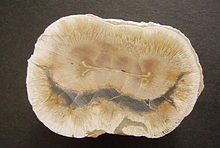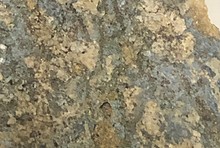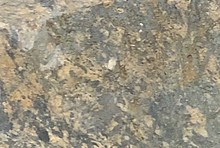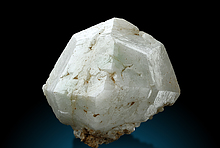Home PageAbout MindatThe Mindat ManualHistory of MindatCopyright StatusWho We AreContact UsAdvertise on Mindat
Donate to MindatCorporate SponsorshipSponsor a PageSponsored PagesMindat AdvertisersAdvertise on Mindat
Learning CenterWhat is a mineral?The most common minerals on earthInformation for EducatorsMindat ArticlesThe ElementsThe Rock H. Currier Digital LibraryGeologic Time
Minerals by PropertiesMinerals by ChemistryAdvanced Locality SearchRandom MineralRandom LocalitySearch by minIDLocalities Near MeSearch ArticlesSearch GlossaryMore Search Options
The Mindat ManualAdd a New PhotoRate PhotosLocality Edit ReportCoordinate Completion ReportAdd Glossary Item
Mining CompaniesStatisticsUsersMineral MuseumsClubs & OrganizationsMineral Shows & EventsThe Mindat DirectoryDevice SettingsThe Mineral Quiz
Photo SearchPhoto GalleriesSearch by ColorNew Photos TodayNew Photos YesterdayMembers' Photo GalleriesPast Photo of the Day GalleryPhotography
╳Discussions
💬 Home🔎 Search📅 LatestGroups
EducationOpen discussion area.Fakes & FraudsOpen discussion area.Field CollectingOpen discussion area.FossilsOpen discussion area.Gems and GemologyOpen discussion area.GeneralOpen discussion area.How to ContributeOpen discussion area.Identity HelpOpen discussion area.Improving Mindat.orgOpen discussion area.LocalitiesOpen discussion area.Lost and Stolen SpecimensOpen discussion area.MarketplaceOpen discussion area.MeteoritesOpen discussion area.Mindat ProductsOpen discussion area.Mineral ExchangesOpen discussion area.Mineral PhotographyOpen discussion area.Mineral ShowsOpen discussion area.Mineralogical ClassificationOpen discussion area.Mineralogy CourseOpen discussion area.MineralsOpen discussion area.Minerals and MuseumsOpen discussion area.PhotosOpen discussion area.Techniques for CollectorsOpen discussion area.The Rock H. Currier Digital LibraryOpen discussion area.UV MineralsOpen discussion area.Recent Images in Discussions
Techniques for CollectorsEngraving Stone

15th Oct 2010 07:52 UTCBrian Stanford
I joined Mindat in July, 1st time posting.
I'm interested in learning to engrave stone. Word engraving on smaller stone.
I'd appreciate any info or guidance relative to methods, best tools, equipment and stone, links or other information sources.
Thank You:
Brian
21st Oct 2010 13:36 UTCKeith Compton 🌟 Manager
Much depends on the hardness of the material you intend to carve / engrave.
I would suggest that any Dremel hand held drill would suffice - you could use dental bits for softer stone and diamond bits for harder material.
Most major hardware stores or lapidary supply house would cater for this.
Cheers

21st Oct 2010 14:11 UTCMichael Croxell

22nd Oct 2010 07:30 UTCBrian Stanford
Brian

22nd Oct 2010 07:40 UTCBrian Stanford
I do have a Dremel, but have had trouble locating any suitable letter templates and find it hard to get a start without running all over the stone, if that makes any sense. No doubt, I need some type of scribe or other tool to mark the stone deep enough to have something to follow???
Thanks Again
Take care:
Brian

22nd Oct 2010 07:44 UTCBrian Stanford
I forgot to ask what model your Foredom tool is? Did it come with a water drip or is it something you rigged on your own?
Thanks.
Take Care:
Brian

22nd Oct 2010 08:05 UTCBrian Stanford
In terms of good, better, best, I'd appreciate any experiences anyone has had, or recommendations relative to rotary tools, air gravers, sand blasting, lasers or other stone engraving methods.
Also, if it's allowed to mention company names, does anyone have any tool supplier preferences or is eBay the way most folks go?
Thank You.
Take Care:
Brian
22nd Oct 2010 13:22 UTCKeith Compton 🌟 Manager
What stone/rock are you trying to engrave?

22nd Oct 2010 14:38 UTCAnonymous User
Good luck.
k

22nd Oct 2010 19:11 UTCBrian Stanford
Mostly various pieces of petrified wood that I've ground flat on one side. Also have some agate slabs that I've bought here and there that I'd like to try something on. Perhaps I'm starting out with stone that is too hard ???
Thanks:
Brian

22nd Oct 2010 19:15 UTCBrian Stanford
Thanks for your reply. Is the diamond extender lubricant you mentioned available at most stores that handle diamond bits or do you go to a specialty store?
Take Care:
Brian

22nd Oct 2010 19:45 UTCAnonymous User

22nd Oct 2010 20:21 UTCMichael Croxell

23rd Oct 2010 06:21 UTCBrian Stanford
Great tips, much appreciated !
Take Care:
Brian

23rd Oct 2010 06:24 UTCBrian Stanford
24th Oct 2010 12:37 UTCKeith Compton 🌟 Manager
Cutting letters into stone by hand is a slow process
You could try outlining the letters first - aluminium pencil - using a letter guide (same as used by architects and the like) then using a small circular diamond saw - carefully cut out the outline. You may need different size saws. Then use either a router type attachment to carve out the inner parts of the letters or use diamond tipped ball or square drill bits.
You could also use letraset as a means of setting out the letters. They will of course be destroyed once you start cutting
A router type attachment - with the drill fixed in a vertical mount will get a better result than by hand. But be warned, this is a slow process. You may need a good deal of diamond slurry to assst. If your material is flat like a slab - ensure that you place on a flat surface. If your material is rough on the other side then you need to ensure that it is flat by placing on a suitable base first. For this you could try a piece of thick packing foam - not affected by water or lubricant but is easy to cut out to mould to the back of your rock. Or simply place on wax as if you were cutting a cabochon and then affix the waxed side to a flat surface.
Good luck
Cheers

25th Oct 2010 07:24 UTCBrian Stanford
Appreciate the tips.
Take Care:
Brian

18th Jun 2012 03:23 UTCGerald Wells

5th Dec 2014 19:07 UTCMatt Estremera
I have a tough question which has seemed to be difficult to answer.
I am looking for a rock type that could be carved into WITHOUT using a dremel. So here's the concept, i'd like to be able to carve into a rock just using a small chisel and the pressure or force from my hand. I do a lot of hiking and think this would be a great way to relax, while creating something unique. I remember in class learning about the different types of mineral rocks that could be scratched by a coin or nail (Mohs hardness scale).
If anyone could please suggest the best type of stone/rock that mite work best to create a nice carving by hand I would really appreciate it. Suggesting a chisel would be greatly appreciated as well.
Enjoy the Holidays.
-Matt

5th Dec 2014 23:20 UTCMichael Croxell
6th Dec 2014 06:14 UTCMark Heintzelman 🌟 Expert
The old practice of lithography, "litho" latin for stone, was actually not a matter of engraving or etching as with metal plate intaglio printing (most world currencies are printed with the intaglio method). The use of stone lithography was a planographic technique in which the artist draws directly on a flat stone, usually with a greasy crayon. The stone is dampened with water, then inked. The ink clings to the greasy crayon marks, but not to the dampened areas. When a piece of paper is pressed against the stone, the ink on the greasy parts is transferred to it. . example:
http://upload.wikimedia.org/wikipedia/commons/5/59/Litography_negative_stone_and_positive_paper.jpg
No engraving stone was ever widely used as a printing plate.
MRH

6th Dec 2014 16:59 UTCKelly Nash 🌟 Expert

23rd Jan 2015 20:20 UTCTravis Hetsler
Happy cutting!

25th Apr 2016 03:09 UTCCarole Joerns

21st Nov 2016 23:08 UTCaimee
i have a large quartz piece and i'm trying to figure out what would cause what resembles pencil marks in the grooves on the carving. i was told the carving was turned on a lathe, and in some of the grooves there is what appears to be graphite pencil. It doesn't come off despite using eraser, alcohol pads, nail polish remover, or comet cleanser. soap and water didn't remove it either. i was thinking a scribe pencil was used, but that comes off, right? need carver's experience!
thanks!
aimee




Mindat.org is an outreach project of the Hudson Institute of Mineralogy, a 501(c)(3) not-for-profit organization.
Copyright © mindat.org and the Hudson Institute of Mineralogy 1993-2024, except where stated. Most political location boundaries are © OpenStreetMap contributors. Mindat.org relies on the contributions of thousands of members and supporters. Founded in 2000 by Jolyon Ralph.
Privacy Policy - Terms & Conditions - Contact Us / DMCA issues - Report a bug/vulnerability Current server date and time: April 23, 2024 11:50:33
Copyright © mindat.org and the Hudson Institute of Mineralogy 1993-2024, except where stated. Most political location boundaries are © OpenStreetMap contributors. Mindat.org relies on the contributions of thousands of members and supporters. Founded in 2000 by Jolyon Ralph.
Privacy Policy - Terms & Conditions - Contact Us / DMCA issues - Report a bug/vulnerability Current server date and time: April 23, 2024 11:50:33











